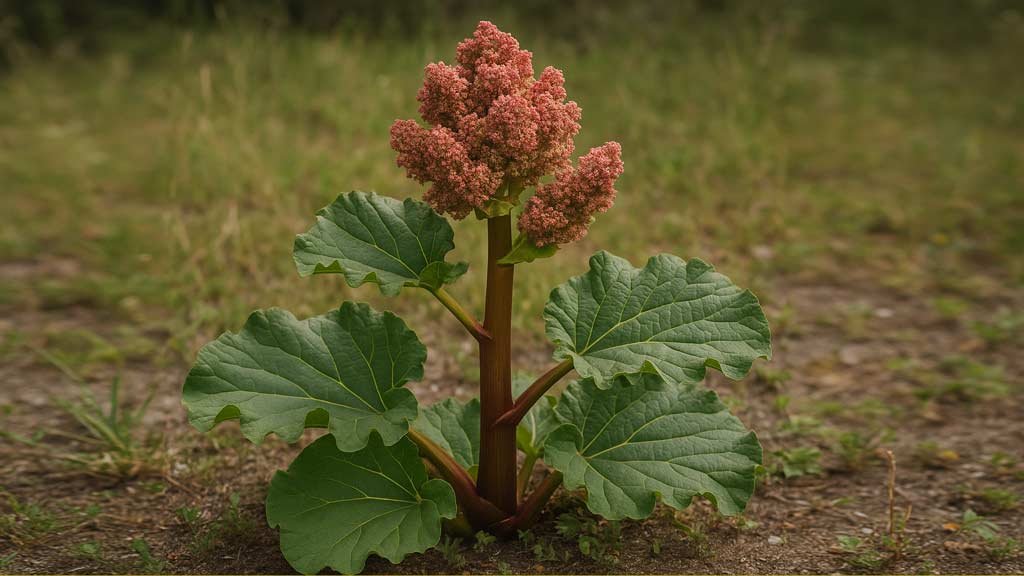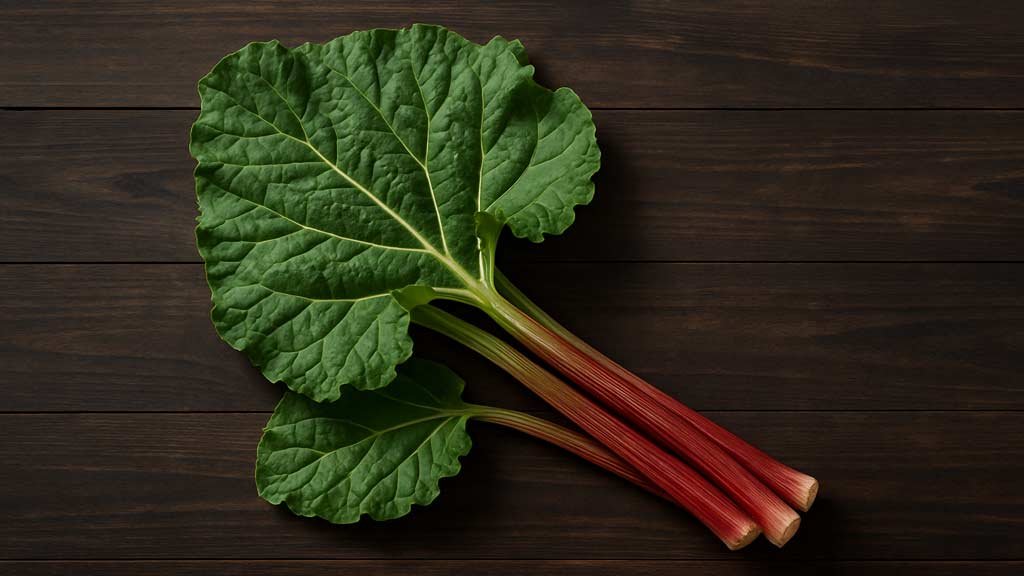The Ancient Plant with Modern Relevance
Siberian rhubarb (Rheum officinale), sometimes called Chinese rhubarb, carries an almost mythical reputation in herbal medicine. Its roots have been used for centuries in traditional Chinese medicine, primarily for digestive health, liver support, and blood circulation. But somewhere along the way, herbalists discovered its subtler role—helping women navigate the turbulent waters of menopause. It’s not flashy. There’s no instant “miracle cure.” Yet, its quiet, steady properties have earned it a loyal following.
This plant thrives in cold, rugged terrains, where few others dare to root themselves. Maybe that’s part of its charm—there’s resilience in every root, something women going through hormonal shifts might find comforting.
Table of Contents
The Root’s Unique Chemistry
The rhubarb root is rich in bioactive compounds: anthraquinones, stilbenes, tannins, and phytoestrogens. Together, they create a subtle symphony of effects on the body. Phytoestrogens are particularly interesting—they mimic estrogen, albeit weakly, which can gently nudge the hormonal system toward balance.
Some lab studies suggest that anthraquinones support liver detoxification and regulate bile flow. Stilbenes, on the other hand, offer antioxidant protection, which may help mitigate oxidative stress that tends to rise during menopause.
Key Constituents at a Glance
- Anthraquinones: Support digestion, detox, and mild liver stimulation
- Phytoestrogens: Provide gentle hormonal support
- Tannins: Help soothe inflammation and maintain gut health
- Stilbenes & Flavonoids: Act as antioxidants, calming cellular stress
It’s a lot to unpack, but think of Siberian rhubarb as a multitasking root—balancing, supporting, and quietly nudging the body toward equilibrium.
Menopause: The Body’s Shifting Seasons
Menopause isn’t just hot flashes and night sweats—it’s a complex hormonal transition affecting mood, digestion, bones, and even skin elasticity. Many women search for natural strategies, and this is where Siberian rhubarb can play a supporting role.
Anecdotally, women report improvements in:
- Reducing occasional hot flashes
- Stabilizing mood swings
- Supporting digestive regularity
- Maintaining energy levels
It’s not an instant fix, but there’s a rhythm to herbal support. Regular use—often as a tincture or decoction—seems to help the body adjust over weeks rather than hours.
How Traditional Medicine Uses Siberian Rhubarb
In traditional Chinese medicine, rhubarb root is often combined with other herbs. It’s valued for its ability to move “stagnant” energy, clear heat, and support the liver and kidneys—all organs indirectly connected to hormonal balance in TCM theory.
Typical preparations include:
- Decoctions: Simmering sliced roots for 20–30 minutes
- Tinctures: Alcohol extraction for concentrated dosing
- Powdered capsules: Convenient modern adaptation
- Infusions with other herbs: Often paired with peony root or licorice to moderate effects
A strong taste is part of the experience—bitter, earthy, and a little dry on the tongue. It’s grounding, the kind of flavor that reminds you you’re consuming something potent, something that demands respect.
The Digestive Connection
One of the overlooked aspects of menopause is how digestion shifts. Estrogen influences gut motility, and as levels drop, some women notice slower digestion or mild constipation. Siberian rhubarb’s anthraquinones gently stimulate the intestines, helping maintain regularity without harsh cramping.
Even the smell of the root, when simmered, carries a warm, almost caramel-like bitterness that fills the kitchen with a sense of earthiness. It’s a sensory reminder that herbal medicine engages more than just the body—it engages the mind.

Hormonal Balance and Phytoestrogens
Phytoestrogens are a delicate topic. They’re not actual estrogen, but they can bind to estrogen receptors and mimic some of its effects. In Siberian rhubarb, the concentrations are subtle, which is why it works best as part of a consistent regimen rather than a single dose approach.
- Mild hot flash relief: Some users notice fewer abrupt episodes
- Mood stability: Anecdotal reports suggest calmer evenings and less irritability
- Bone and cardiovascular support: Phytoestrogens may play a small role in preserving bone density and heart health
It’s fascinating to see how plants can mirror our physiology without overwhelming it—a gentle nudge rather than a shove.
Safety and Considerations
Siberian rhubarb is potent. Overuse, especially in high doses of raw root, can lead to digestive upset or diarrhea due to strong anthraquinones. Pregnant or breastfeeding women should avoid concentrated doses, and anyone with kidney disease should be cautious.
Practical tips:
- Start with small doses (½ teaspoon of dried root in a cup of hot water)
- Limit daily use to recommended guidelines on commercial preparations
- Combine with soothing herbs like licorice or chamomile if the flavor is too bitter
- Store dried roots in a cool, dark place to preserve potency
Balance and moderation are key. The root is helpful, but it’s not a replacement for lifestyle adjustments—diet, movement, and stress management still matter.
Preparing Siberian Rhubarb at Home
You can experiment with teas, tinctures, or powdered capsules. Here’s a simple tea method:
- Slice 1 teaspoon of dried root.
- Add to 1 cup of boiling water.
- Simmer gently for 15–20 minutes.
- Strain and sip slowly, savoring the earthy aroma.
For tinctures, alcohol extracts the root’s active compounds. A few drops in water or tea daily is usually enough. Many women combine it with other menopausal-supporting herbs like black cohosh, red clover, or peony for synergistic effects.
Anecdotes and Experiences
A friend once confided that she brewed Siberian rhubarb tea every evening during the last weeks before menopause fully hit. She described the flavor as “a gentle hug in a cup—bitter, yes, but strangely soothing.” Over several weeks, she noticed steadier moods, more regular digestion, and even a subtle reduction in night sweats.
Another story comes from an herbalist in Beijing, who swears by combining rhubarb root with peony for emotional balance. “It’s not magic,” she said, “but it’s honest work. The plant listens if you let it.”
Beyond Menopause: Additional Benefits
While menopause is the focus, Siberian rhubarb has broader applications:
- Digestive health: Mild laxative, supports bile flow
- Detoxification: Traditional uses for liver cleansing
- Circulation: Promotes healthy blood flow
- Antioxidant protection: Stilbenes reduce cellular stress
Even if your goal isn’t menopausal support, having this root in your cabinet can be a quiet, multi-purpose ally.
Growing and Sourcing the Root
Siberian rhubarb prefers cooler climates and well-drained soil. It’s a perennial in its native regions and can be harvested sustainably. Commercially, roots are often dried and sliced, sold as loose herb, capsules, or tinctures. Look for reputable sources to ensure quality—contamination and misidentification can happen with potent herbs.
Incorporating Herbal Wisdom Naturally
The beauty of Siberian rhubarb is subtlety. It doesn’t scream “take me!” Instead, it integrates into your life gently—morning tea, evening tincture, culinary touch. That’s the hallmark of a mature medicinal herb: it works quietly, steadily, and over time.
Women navigating menopause often crave exactly that: a stable, calming presence, a partner in transition rather than a dramatic intervention. And this root, centuries old, offers precisely that.
Article Sources
At AncientHerbsWisdom, our content relies on reputable sources, including peer-reviewed studies, to substantiate the information presented in our articles. Our primary objective is to ensure our content is thoroughly fact-checked, maintaining a commitment to accuracy, reliability, and trustworthiness.
- Bahtiar, A., & Sari, D. (2021). Rhaponticin contained Rheum officinale root extract improved postmenopausal symptoms in ovariectomized rats. Journal of Advanced Pharmaceutical Technology & Research, 12(1), 14–19. https://doi.org/10.4103/japtr.JAPTR_273_20
- Keiler, A. M., & Krenn, L. (2012). Long-term effects of the rhapontic rhubarb extract ERr 731® on endometrial hyperplasia and estrogenic activity. Maturitas, 73(3), 220–225. https://doi.org/10.1016/j.maturitas.2012.02.007
- Merlino, A. M., & McCullough, M. (2011). Is extract ERr 731 from Rheum rhaponticum effective in treating menopausal symptoms? PCOM Systematic Reviews, 3(1), 1–10. https://digitalcommons.pcom.edu/cgi/viewcontent.cgi?article=1027&context=pa_systematic_reviews
- Wilson, M., & Kaszkin-Bettag, M. (2021). Rheum rhaponticum root extract improves vasomotor menopausal symptoms and estrogen-regulated targets in ovariectomized rat model. International Journal of Molecular Sciences, 22(3), 1032. https://doi.org/10.3390/ijms22031032

